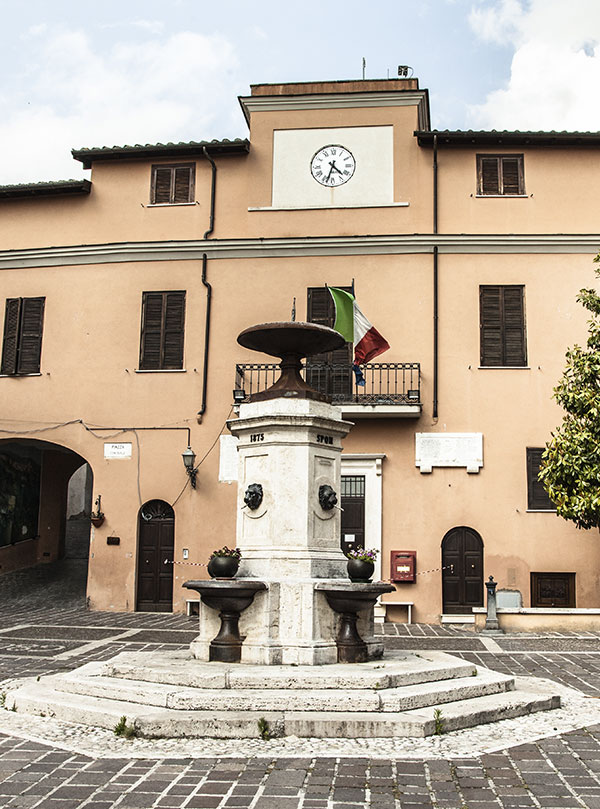At the beginning of the short Via G. B. Orsini, in front of the Portonaccio of the first Orsini Palace of Montopoli di Sabina, stands the 16th-century Porta Maggiore, the main entrance to the town’s historic center.
Historic Center Montopoli di Sabina

Posizione
Via XII Ottobre
02034 Montopoli di Sabina (RI)

Orari di apertura
Always open

Contatti
Tel.
Mail:
At the beginning of the short Via G. B. Orsini, in front of the Portonaccio of the first Orsini Palace of Montopoli di Sabina, stands the sixteenth-century Porta Maggiore, the main entrance to the historic center of the town.
Continuing to the right, one reaches the Piazza Comunale with the Town Hall and its ancient fountain, built with the proceeds of the sales of property confiscated from the Church. This fountain, dated 1875, was built “for beautification” along with the aqueduct and initially used water from some springs on Mount Tancia.
Climbing along the streets of the center, recently decorated with a peace mural and a painting depicting all the stages of Montopoli’s main and most characteristic agricultural activity, olive growing, we come to the Palazzo del Capitano del Popolo, a 15th-century building that now houses the Montopoli secondary school.
Continuing straight ahead, you reach the belvedere terrace, from which there is a splendid view of the surrounding mountains and neighboring villages. Next to it are other buildings of military use: on one side the Captain’s Command House and on the other the Casermette used by the militia, with the imposing Ugonesca Tower that was intended to create a network of control and defense.
Continuing to the left, through an atmospheric dark and narrow alley, we come to Campo di Fiori, once a wasteland inside the castle and now home to many of the town’s historical points. In the past, it was used as a courthouse for the Abbot of Farfa to hold trials. For this very reason, an independent cottage was erected to serve as a Bancum Juris, or depository of legal acts. Among the notable buildings today is the house of the well-known poet and professor, Pietro Oddi, to whom Montopoli dedicated a plaque carved in marble in 1999.
Continuing toward the Campo di Fiori exit, you come to the Church of St. Michael the Archangel, whose bell tower dates back to the 14th century and features elegant Gothic mullioned windows with two lights. The two ancient bells, affectionately called Marta and Maria by the Montopolesi, complete the historic atmosphere of the place.
Finally, returning toward Porta Maggiore, on the left is access to the ancient village of Montopoli, predominantly inhabited by serfs, who resided in low houses with gabled roofs, located on the left side. On the right, under the castle, were the artisan workshops, located in caves.







